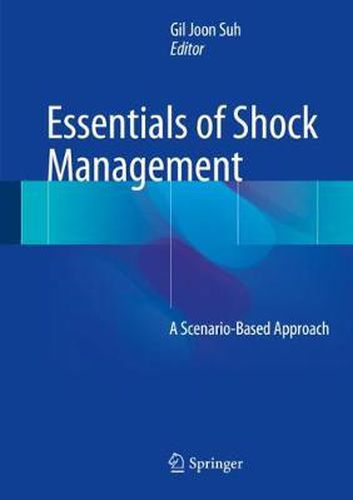Readings Newsletter
Become a Readings Member to make your shopping experience even easier.
Sign in or sign up for free!
You’re not far away from qualifying for FREE standard shipping within Australia
You’ve qualified for FREE standard shipping within Australia
The cart is loading…






This book is designed to offer the reader first-rate guidance on shock management in the real world. Comprehensive, evidence-based, and up-to-date instruction is provided on optimal care of patients with different types of shock - septic, hemorrhagic, cardiogenic, anaphylactic, and obstructive - at all stages from initial response through to ICU admission. As well as management, the coverage encompasses pathophysiology, clinical presentation, diagnosis, and emerging trends. A further key feature is the use of a scenario-based approach to present a series of cases based on real-life experiences. Here, a narrative style and Q&A form are employed to vividly convey scenarios that may be encountered in clinical practice and to elucidate decision making in complex circumstances. When readers experience difficulty in answering the questions, the earlier sections can be consulted to identify the correct response. This book will be of great value for all health care professionals. In particular, it will be very helpful for novice or inexperienced practitioners in emergency medicine, critical care medicine, and traumatology.
$9.00 standard shipping within Australia
FREE standard shipping within Australia for orders over $100.00
Express & International shipping calculated at checkout
This book is designed to offer the reader first-rate guidance on shock management in the real world. Comprehensive, evidence-based, and up-to-date instruction is provided on optimal care of patients with different types of shock - septic, hemorrhagic, cardiogenic, anaphylactic, and obstructive - at all stages from initial response through to ICU admission. As well as management, the coverage encompasses pathophysiology, clinical presentation, diagnosis, and emerging trends. A further key feature is the use of a scenario-based approach to present a series of cases based on real-life experiences. Here, a narrative style and Q&A form are employed to vividly convey scenarios that may be encountered in clinical practice and to elucidate decision making in complex circumstances. When readers experience difficulty in answering the questions, the earlier sections can be consulted to identify the correct response. This book will be of great value for all health care professionals. In particular, it will be very helpful for novice or inexperienced practitioners in emergency medicine, critical care medicine, and traumatology.